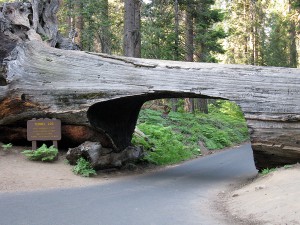 After the brutal winter most of us endured, I thought this would be the perfect time to start thinking about your summer vacation. We all earned a nice getaway involving warm weather, dry roads, interesting places to visit and good food to try along the way. For this article, I wanted to get you out of the truck and into the car for a road trip. With this in mind, I started thinking about the national parks, memorials, monuments, battlefields and more as possible vacation destinations. All of the big ones like Yellowstone, the Redwoods and the Blue Ridge Parkway came to mind, but in doing my research, I found that there is so much more out there to see. There are millions of acres out there just waiting to be explored and enjoyed.
After the brutal winter most of us endured, I thought this would be the perfect time to start thinking about your summer vacation. We all earned a nice getaway involving warm weather, dry roads, interesting places to visit and good food to try along the way. For this article, I wanted to get you out of the truck and into the car for a road trip. With this in mind, I started thinking about the national parks, memorials, monuments, battlefields and more as possible vacation destinations. All of the big ones like Yellowstone, the Redwoods and the Blue Ridge Parkway came to mind, but in doing my research, I found that there is so much more out there to see. There are millions of acres out there just waiting to be explored and enjoyed.
Here are some fun facts about a few U.S. National Parks: the Grand Canyon is one of the seven Natural Wonders of the World; when a giant sequoia tree fell in 1937 in the Sequoia National Park in California and blocked a road, the National Park Service carved a tunnel through the 21’ diameter tree and created a visitor attraction (see photo); Yosemite National Park in California is home to three of the highest waterfalls in the world; Death Valley National Park recorded one of the hottest temperatures ever on earth in 1913 at 134 degrees!
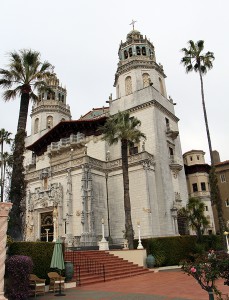 To start figuring out where you might want to go, park the truck and search “National Parks” on the Internet and let all the options overwhelm you. As you plan where you want to go this year, you might even want to start making a list for next year’s vacation. Natural beauty, unique geological features, recreational opportunities and unusual ecosystems are criteria for the selection of National Parks, while historical or archaeological significance is used for National Monuments. There are 59 protected areas in the United States known as national parks. They are operated by the National Park Service, which is an agency of the Department of Interior.
To start figuring out where you might want to go, park the truck and search “National Parks” on the Internet and let all the options overwhelm you. As you plan where you want to go this year, you might even want to start making a list for next year’s vacation. Natural beauty, unique geological features, recreational opportunities and unusual ecosystems are criteria for the selection of National Parks, while historical or archaeological significance is used for National Monuments. There are 59 protected areas in the United States known as national parks. They are operated by the National Park Service, which is an agency of the Department of Interior.
It takes an act of the U.S. Congress to establish a national park. Yellowstone became the first national park in 1872 when President Ulysses S. Grant signed its existence into law. Mackinac National Park followed in 1875, but was decommissioned 20 short years later in 1895. In 1890, Sequoia and Yosemite in California were added. The National Park Service was created by the Organic Act of 1916 with its mission being to conserve the scenery, wildlife, natural and historic objects and to provide enjoyment in such a manner that will leave these areas unimpaired for the enjoyment of future generations.
Not every state has a national park. In fact, only 27 of them do – California and the United States Virgin Islands each boast nine parks, while Alaska has eight, Utah has five and Colorado has four. With 13.2 million acres (which is bigger than the entire country of Switzerland), Wrangell-St. Elias National Park in Alaska goes from one of the tallest peaks in North America, Mount St. Elias (18,008 feet), to the ocean. This is the largest of all national parks (see photo). Alaska is home to the next three largest parks, while Hot Springs National Park in Arkansas is the smallest, with less than 6,000 acres. With over 9,000,000 visitors in 2011, Great Smoky Mountains National Park in North Carolina and Tennessee was the most visited park, while the remote Lake Clark National Park in Alaska only had 5,227 visitors that same year.
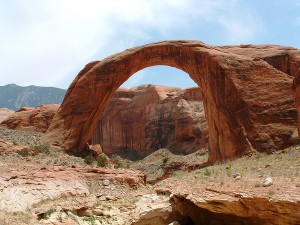 If remote locations are not your thing, there’s a lot to see in our nation’s capital, as well. The George Washington Memorial Parkway was designed for recreational driving. By linking sites that commemorate important episodes in American history and preserving habitat for local wildlife, the parkway and its associated trails provide a scenic place to play and rest in the busy Washington, DC metropolitan area. The Vietnam Veteran’s Memorial is a national memorial in Washington, DC that honors our members of the U.S. armed forces who fought in the Vietnam War, service members who died in service in Vietnam/South East Asia, and those service members who were unaccounted for (Missing In Action) during the War. The memorial consists of three separate parts: the Three Soldiers statue, the Vietnam Women’s Memorial, and the Memorial Wall, which is the best-known part of the memorial. The National Mall is a national park in downtown Washington, DC which refers to the entire area between the Lincoln Memorial and the United States Capitol, with the Washington Monument between (see photo).
If remote locations are not your thing, there’s a lot to see in our nation’s capital, as well. The George Washington Memorial Parkway was designed for recreational driving. By linking sites that commemorate important episodes in American history and preserving habitat for local wildlife, the parkway and its associated trails provide a scenic place to play and rest in the busy Washington, DC metropolitan area. The Vietnam Veteran’s Memorial is a national memorial in Washington, DC that honors our members of the U.S. armed forces who fought in the Vietnam War, service members who died in service in Vietnam/South East Asia, and those service members who were unaccounted for (Missing In Action) during the War. The memorial consists of three separate parts: the Three Soldiers statue, the Vietnam Women’s Memorial, and the Memorial Wall, which is the best-known part of the memorial. The National Mall is a national park in downtown Washington, DC which refers to the entire area between the Lincoln Memorial and the United States Capitol, with the Washington Monument between (see photo).
If historic houses are what you like, the home of First Lady Eleanor Roosevelt is now a National Historic Site located just 90 miles north of New York City in Hyde Park, NY. The modest house near the Hudson, which she called Val-Kill, welcomes visitors as Mrs. Roosevelt welcomed her many guests. She once told a friend, “The greatest thing I have learned is how good it is to come home again.” I think this would apply to many drivers and how they feel about getting home after being on the road for a few weeks. Also located in Hyde Park, near Val-Kill, is the Vanderbilt Mansion National Historic Site. This beautiful “country cottage” offers a glimpse into a world known by only an elite few. Today, it might be the most intact example of the type of estate constructed by wealthy industrialists of that era. With breathtaking views of the Hudson River and Catskill Mountains, you will not be disappointed with this fully-furnished 54-room mansion.
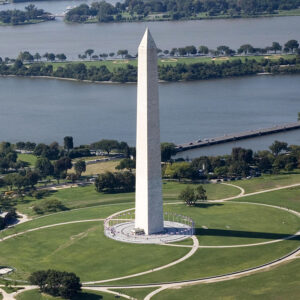 If taking a trip to the east coast is not something you want to do just to see a big fancy house, then visit Hearst Castle. Designated as a National and California Historical Landmark located on the Central Coast of California, Hearst Castle was designed by architect Julia Morgan between 1919 and 1947 for newspaper magnate William Randolph Hearst, who died in 1951. The Hearst Corporation donated the opulent property and all of its beautiful hilltop grounds to the state of California in 1957. Since that time, it has been maintained as a state historic park where the estate, and its considerable collection of art and antiques, is open for public tours. Despite its location far from any urban center, the mansion attracts about one million visitors per year.
If taking a trip to the east coast is not something you want to do just to see a big fancy house, then visit Hearst Castle. Designated as a National and California Historical Landmark located on the Central Coast of California, Hearst Castle was designed by architect Julia Morgan between 1919 and 1947 for newspaper magnate William Randolph Hearst, who died in 1951. The Hearst Corporation donated the opulent property and all of its beautiful hilltop grounds to the state of California in 1957. Since that time, it has been maintained as a state historic park where the estate, and its considerable collection of art and antiques, is open for public tours. Despite its location far from any urban center, the mansion attracts about one million visitors per year.
If the history of transportation fascinates you, and it probably does since you work in that industry, check out some of the old canals. Though a short distance from the urban areas of Cleveland and Akron, Ohio, Cuyahoga Valley National Park seems worlds away. The park is a refuge for native plants and wildlife, and provides routes of discovery for visitors. The winding Cuyahoga River gives way to deep forests, rolling hills and open farmlands. Walk or ride the Towpath Trail to follow the historic route of the Ohio & Erie Canal, which once connected the natural resources of the United States’ interior with its markets on the eastern seaboard. Yet another park, just north of Washington, DC, is the Chesapeake & Ohio Canal National Historical Park. This canal, which operated for nearly 100 years, was a lifeline for communities along the Potomac River as agricultural products, coal and lumber floated down the waterway to market. These canals became obsolete with the advent of the railroad, but today they endure as pathways for discovering historical, natural and recreational treasures.
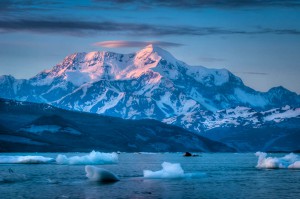 If natural wonders excite you, check out Rainbow Bridge near Lake Powell in southern Utah (see photo). Located adjacent to a Navajo Indian Reservation, Rainbow Bridge is only accessible by boat from Lake Powell, followed by a two-mile walk. From its base to the top of the arch, it is 290 feet (nearly the height of the Statue of Liberty) and spans 275 feet across the river which formed it. The top of the arch is 42 feet thick and 33 feet wide. This beautiful span has inspired American Indian tribes who consider it sacred, along with the 85,000 or so visitors from around the world that visit it each year. Each visitor is asked to visit the site in a spirit that honors and respects the cultures to whom it is sacred.
If natural wonders excite you, check out Rainbow Bridge near Lake Powell in southern Utah (see photo). Located adjacent to a Navajo Indian Reservation, Rainbow Bridge is only accessible by boat from Lake Powell, followed by a two-mile walk. From its base to the top of the arch, it is 290 feet (nearly the height of the Statue of Liberty) and spans 275 feet across the river which formed it. The top of the arch is 42 feet thick and 33 feet wide. This beautiful span has inspired American Indian tribes who consider it sacred, along with the 85,000 or so visitors from around the world that visit it each year. Each visitor is asked to visit the site in a spirit that honors and respects the cultures to whom it is sacred.
Search “US National Park Signs” and you will get a huge snapshot of places to visit and a little bit of information about most of them. There has to a place that would interest everyone in your family! I have a few places that I would like to visit one day, including Bryce Canyon and Zion National Park in Utah – the red rock formations look spectacular in photos, and I hope to one day take some pictures of my own there. I would also like to see Grand Canyon – hopefully one day I will get to be on that ridge and enjoy the beauty I can only imagine. I’ve been to the Redwoods, but I would love to go back. After hauling wine for so many years in California, it would be nice to go back to Napa or Sonoma and visit some of the wineries I used to load at.
Because you drive for a living, some might think you are crazy to want to pack everyone up in the car and drive for a vacation. Truth is, flying might get you somewhere faster, but then you miss everything in-between. I encourage you to set aside some time and plan a vacation trip to one of these amazing places. These were just a few random suggestions of locations I found that sounded interesting, but look for yourself and see what catches your eye. This country is full of incredible and historical sites – get out of your truck and get out there and find them!
